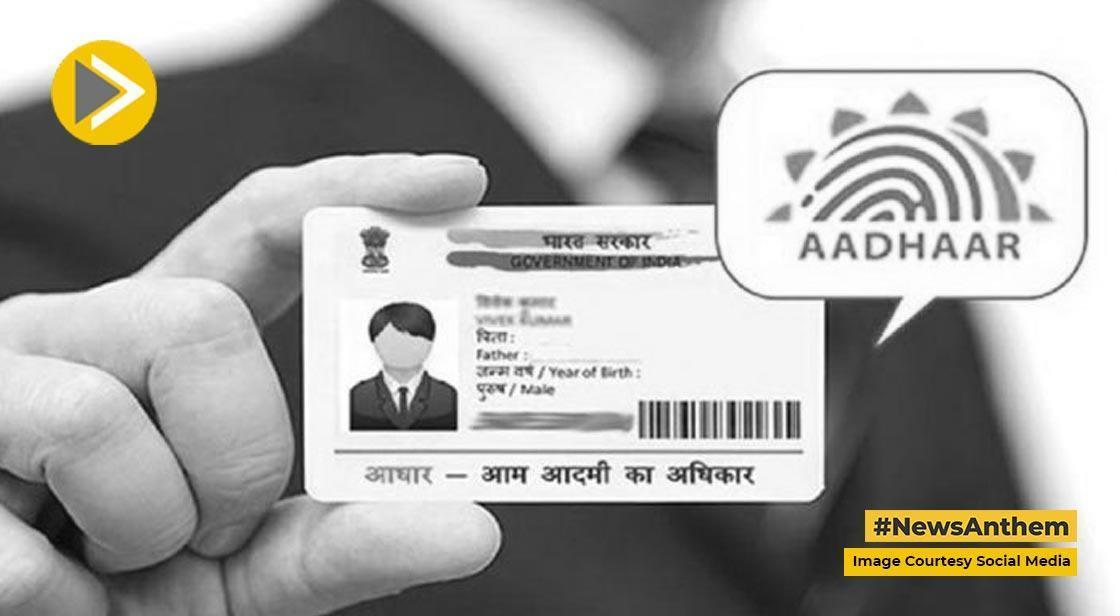UIDAI Unveils ‘Aadhaar Vision 2032’ to Reinforce India’s Digital Identity with AI, Blockchain & Quantum

News Synopsis
In a decisive move to reshape the future of digital identity in India, the UIDAI has announced the launch of the “Aadhaar Vision 2032” framework. This ambitious roadmap is designed to fortify the Aadhaar ecosystem over the coming decade, leveraging emerging technologies like artificial intelligence (AI), blockchain, quantum computing and advanced encryption to ensure that India’s digital identity infrastructure remains secure, scalable and inclusive.
Vision 2032 – Key Objectives
Reinforcing the technological foundation
The framework emphasises strengthening the core architecture of the Aadhaar system so that it can handle future demands — not only in terms of volume but also with rising complexity of digital services and identity interactions.
By incorporating next-generation encryption mechanisms, it seeks to protect against emerging cyber-threats and keep pace with global standards of privacy and cybersecurity.
Integrating advanced technologies
-
AI-based authentication: To enable smarter, more adaptive identity verification and fraud detection.
-
Blockchain for transparency & trust: To ensure integrity of transactions, auditability and decentralised trust models.
-
Quantum readiness: To future-proof the system against quantum-computing threats, and explore quantum encryption or resilient algorithms.
These technology levers are central to the Vision 2032 strategy.
Alignment with regulation and global standards
The Vision 2032 document will be drafted by a high-level expert committee, and it will explicitly align the Aadhaar architecture with the Digital Personal Data Protection Act (DPDP-Act) and international norms for privacy and cybersecurity.
In doing so, the UIDAI is signalling a shift toward more future-aware governance of digital identity.
Inclusivity, scalability and trust
Beyond technology, the framework emphasises that Aadhaar must remain inclusive (accessible to all residents), scalable (able to grow with India’s digital economy), and people-centric, reinforcing its role not merely as an ID but as a foundational service for digital governance.
Governance & Expert Committee
A dedicated High-Level Expert Committee has been constituted under the chairmanship of Neelkanth Mishra, Chairperson of UIDAI. The committee brings together distinguished figures from academia, industry and administration, including:
-
Bhuvnesh Kumar (CEO, UIDAI)
-
Vivek Raghavan (Co-Founder, Sarvam AI)
-
Dheeraj Pandey (Founder, Nutanix)
-
Sasikumar Ganesan (Head of Engineering, MOSIP)
-
Rahul Matthan (Partner, Trilegal)
-
Navin Budhiraja (CTO & Head of Products, Vianai Systems)
-
Dr Prabaharan Poornachandran (Professor, Amrita University)
-
Anil Jain (Professor, Michigan State University)
-
Mayank Vatsa (Professor, IIT Jodhpur)
-
Abhishek Kumar Singh (Deputy Director General, UIDAI)
This blend of expertise underscores the seriousness of the initiative and its multi-disciplinary nature. DD News+1
Why this matters now
Rapid digitalisation & rising demand
India’s digital economy is booming, and the volume and diversity of identity-based transactions continue to surge. The Aadhaar system is at the heart of this trajectory. Strengthening its technology stack is thus not optional — it’s imperative.
Evolving threat landscape
Cyber-threats are growing in sophistication (including possibilities enabled by quantum computing). Unless the architecture is upgraded proactively, there is risk of identity fraud, data breaches or erosion of trust. Vision 2032 anticipates this.
Regulatory & global benchmark alignment
With the DPDP Act and other international frameworks (such as GDPR-type regimes) influencing how personal data must be handled, the Aadhaar system must evolve to stay compliant and globally credible.
Long-term strategic planning
Rather than piecemeal upgrades, Vision 2032 represents a strategic, decade-long pathway. It emphasises sustainability, future-readiness and proactive redesign rather than reactive fixes.
What happens next?
Drafting the Vision 2032 document
The expert committee will prepare the formal Vision 2032 document, delineating the “next-generation Aadhaar architecture” and specifying technology adoption timelines, governance models, encryption/quantum-resilience roadmaps, and compliance mechanisms. The Indian Express+1
Implementation phases & milestones
While details are yet to emerge, we can expect the roadmap to include phased roll-outs of new modules (for AI authentication, blockchain frameworks, quantum-resilient encryption), pilot programmes, industry/academic research partnerships, and regular assessments of progress.
Stakeholder engagement & public outreach
As the plan unfolds, UIDAI will likely engage with states/UTs, industry (fintechs, banks), academia, privacy advocates and citizens to ensure the changes are inclusive, transparent and trusted.
Potential challenges & considerations
Technology adoption & infrastructure readiness
Deploying quantum-resilient systems, blockchain at nation-scale and AI-powered authentication across all Aadhaar use-cases is a formidable task. Resource, infrastructure and capacity-building constraints may slow progress.
Privacy, ethical & governance issues
With greater use of AI and new tech comes stronger scrutiny on how biometrics and personal data are collected, stored and used. Ensuring citizens’ rights, minimizing bias and preserving trust will be critical.
Inter-operability & backward-compatibility
Transitioning to a new architecture should not disrupt existing services or leave older systems insecure. Maintaining continuity while upgrading is a balancing act.
Effective timelines and accountability
Ambitious frameworks can stagnate without clear milestones, accountability, and monitoring mechanisms. Ensuring timely delivery will be key to realising the vision.
Conclusion
The launch of “Aadhaar Vision 2032” marks a pivotal moment in India’s digital identity journey. By proactively embracing AI, blockchain, quantum computing and advanced encryption, the UIDAI aims to ensure that Aadhaar remains not just relevant but robust, secure and inclusive for the next decade and beyond.
While formidable challenges lie ahead, the formation of a high-level expert committee and the clear alignment with regulatory and global norms suggest a strategic and credible approach. For India’s digital governance and economy, this roadmap signals readiness for the future — where identity will be foundational, trusted and technologically resilient.








